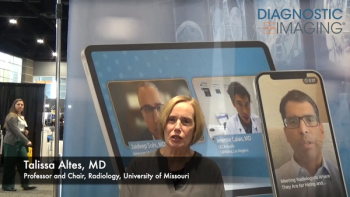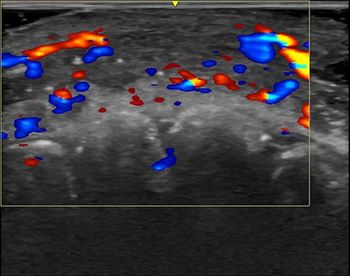
6 Red Flags: Avoid Becoming Invisible in the Dark Reading Room
Radiology’s technology advances threaten to push the specialty back into the dark – here is what providers need to pay attention to.
Radiology is largely the hub of all clinical activity with providers giving referring physicians the diagnostic details that are critical to patient treatment and management. But, the specialty is in danger of fading into the shadows if it is not careful.
In an editorial published in
For more coverage based on industry expert insights and research, subscribe to the Diagnostic Imaging e-Newsletter
“We have spent many decades striving to bring radiology to the center of patient care. That is not going to change any time soon, but what could change is the perception of the contribution of radiologists,” he said. “We cannot expect recognition for our contribution if we hide from view. By being aware of the risks and dangers of invisibility, we can mitigate them, and continue to represent our specialty positively, and in plain sight.”
These are the areas he suggested radiologists keep top-of-mind:
- Artificial Intelligence: Lingering fears about these technologies replacing radiologists could dissuade the next generation of doctors from choosing the specialty. Practicing radiologists must change this narrative and work to understand these new tools, he said, ensuring they are used ethically and safely as a supplemental aide to – not a replacement for – the radiologist.
- PACS/Voice Recognition: These advances have added speed to the reporting process, but they have largely stripped radiology of its face-to-face interactions with referring providers. Consequently, ordering physicians now tend to think of radiology as a rapid, automated, anonymous test-result service. Radiologists must guard against this and work to maintain communication and relationship with referrers.
- Teleradiology: In today’s environment, teleradiology is a must to keep most providers safe from COVID-19 infection, Brady said. But, the industry cannot ignore how, by physically removing radiologists from the healthcare environment, it creates the impression that radiologists are disinterested parties who merely produce reports from any location. Radiologists must make sure that payers and referrers know that, while teleradiology is valuable, it is not a complete substitution for on-site radiology service.
- Structured Reporting: This effort to streamline reporting has the potential to reduce what was once a thoughtful clinical discussion of findings to a check-list lab report. Providers must focus on highlighting their clinical care input that goes beyond the text and content of a structured report to ensure referring providers continue to see it as a clinical consultation.
- Electronic Communication: Texts and instant messages have become the most common types of communication in healthcare, undercutting the benefits of personal interaction. While the technology is highly efficient, younger radiologists do not have the same experience with face-to-face interactions with colleagues and patients that can help to effectively address concerns and solve problems.
- COVID-19: The pandemic changed how radiology operated on a dime – providers were pushed into remote reading in an effort to keep them and their patients as safe as possible. But, it is important to remember that the COVID-19 environment is not normal life, and radiology must push back against adopting the practice changes permanently.
Paying attention to these issues is vital, Brady said, because the work of radiology will continue. Providers must safeguard themselves from becoming strangers to the referring providers with whom they once worked face-to-face.
“If we are hidden away in an office, rarely meeting patients or referrers, it is only a small step to being forgotten,” he warned. “So, however much our technology, work circumstances, and inclinations may conspire, let us not allow ourselves become the recluses of medicine.”
Newsletter
Stay at the forefront of radiology with the Diagnostic Imaging newsletter, delivering the latest news, clinical insights, and imaging advancements for today’s radiologists.




























